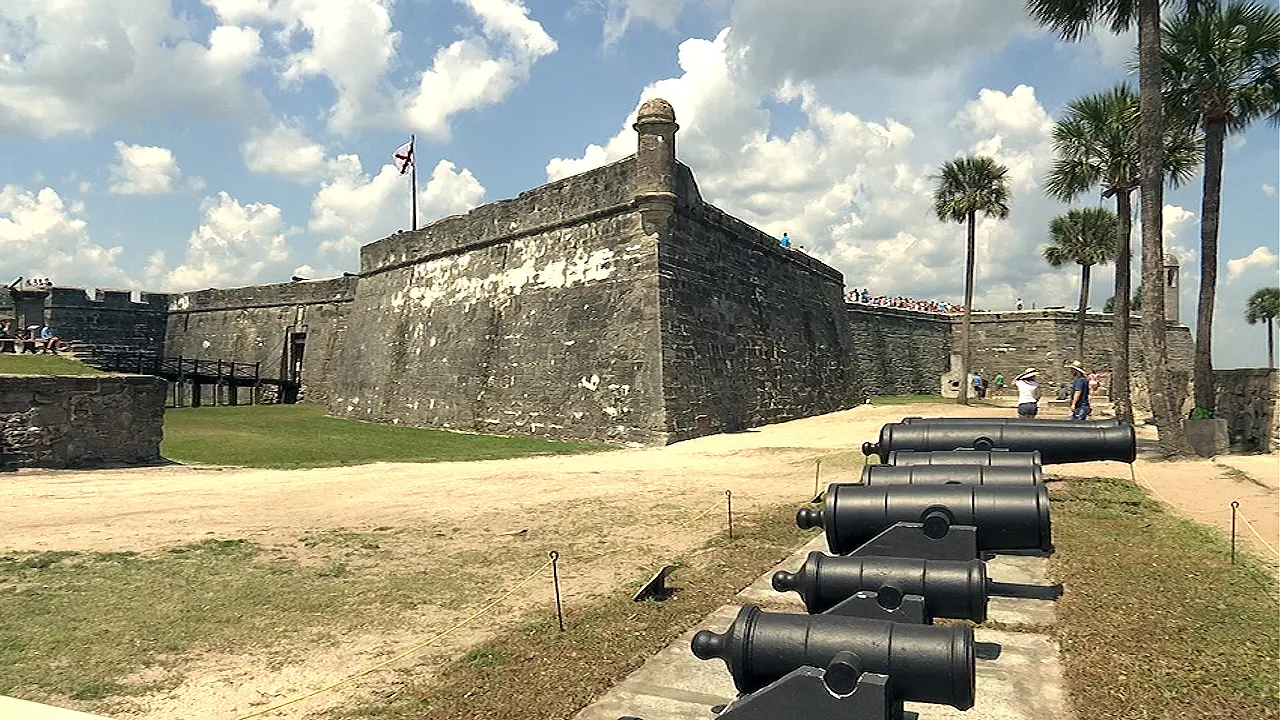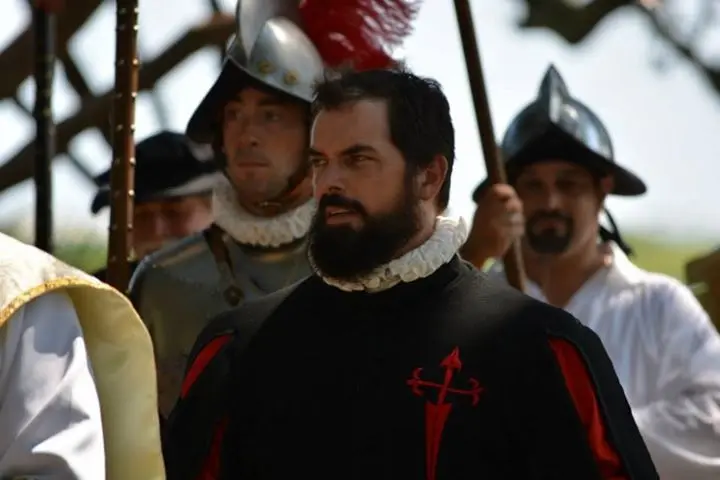St. Augustine is the oldest continuously occupied European settlement in what is now the United States.
By the time Jamestown was established and the Pilgrims landed at Plymouth Rock, the people who originally founded St. Augustine were having grandchildren and great-grandchildren.
Don Pedro Menéndez de Avilés founded the city of St. Augustine on September 8, 1565.
Menéndez was personally motivated to come to Florida in search of his son Juan, whose ship was lost off the coast here. The Spanish Crown was anxious for Menéndez to reclaim La Florida from the French Huguenots, who had established a settlement called Fort Caroline near present day Jacksonville.
It was almost an accident that the Spanish found out about Fort Caroline.
“It really was the hungry stomachs at Fort Caroline that ultimately led to the Spanish finding out that the French were in Florida,” says colonial historian Susan Parker, director of the St. Augustine Historical Society.
“These hungry soldiers left Fort Caroline, thinking they could sail back to France in this small boat that they had. They were captured off the coast of Cuba. The Cuban officials find out that there’s this French colony in La Florida and send the information back to Spain. So it’s something as simple as a growling stomach that leads to a huge international situation.”
The Catholic Spanish believed that the Protestant French were heretics and had wrongly invaded their territory. Menéndez successfully slaughtered the French colonists, keeping alive only a handful of musicians and a few hasty converts to Catholicism.
He never found any trace of his shipwrecked son.
St. Augustine is the site of many “firsts” for what is now the United States.
America’s first Christian church, first hospital, and first school were all established in St. Augustine. This country’s first city plan was developed there. The street systems found on maps from 1586 still exist today.
“I think what’s so amazing about St. Augustine after 450 years of being an active town that people live in, is that it’s still here, and it’s still tiny,” says James Cusick, curator at the P.K. Yonge Library of Florida History.
Many of St. Augustine’s narrow streets are a challenge for modern vehicular traffic.
“It’s survived not as a big metropolis, but as a tiny, tiny little place for 450 years. That’s incredible,” Cusick says. “If you walk around the town today, you can get a sense, I think still, of what the Colonial Era was like here.”
Construction on St. Augustine’s Castillo de San Marcos began in 1672. The imposing Spanish fortress is the only one in existence on the North American mainland. The fort successfully defended the city from numerous attacks over the centuries, but was perhaps not quite as formidable as it appeared, armed with outdated weaponry.
“I’ve wondered how many attacks were never made or even considered because of the existence of the Castillo,” says Parker. “The English, or perhaps the French, or even the Americans later on are not quite sure that they’ll be able to withstand the canon fire from the Castillo, never knowing that the canon didn’t operate very well.”
The 450th anniversary of the founding of St. Augustine has been commemorated all year, culminating this week with concerts, art exhibitions, and a reenactment of the first landing of Menéndez. Historic reenactors from Florida Living History and the Men of Menendez, part of the Historic Florida Militia, played active roles.
Chad Light has earned recognition as the modern embodiment of Menéndez, appearing in television commercials, a one-man theatrical presentation, on billboards, Facebook, and at special events including official anniversary celebrations sponsored by the city. He regularly portrays Menéndez at the Fountain of Youth Archaeological Park, where excavations have uncovered the original St. Augustine settlement.
A true Renaissance Man, Light created a bronze sculpture of Menéndez, unveiled just in time for the 450th anniversary commemoration.
“Some of us may see a fifty year benchmark in our city’s birthday more than once in our lifetime, hopefully so,” says Light. “But for us, it’s the only time it will happen as we are adults and can do something to celebrate it. The responsibility is on us, and for many of us it is a passion.”

